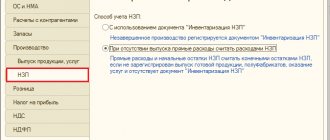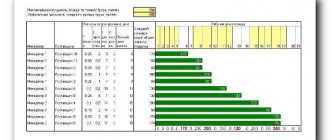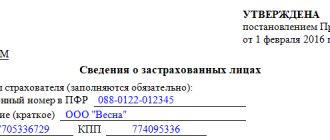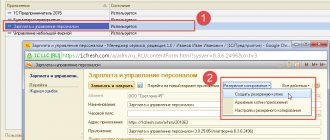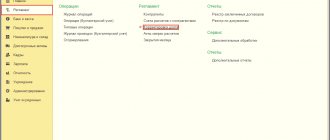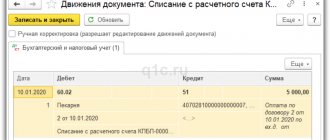Gross and marketable output of agribusiness sectors
Gross output is the total volume of output produced by an enterprise, industry, etc. over a certain period of time.
Gross agricultural output includes products:
1) crop production;
2) livestock farming.
Gross crop production includes:
1) gross yields of agricultural crops (including by-products - manure, hay),
2) the cost of planting perennial plants,
3) the cost of growing young perennial plantings,
4) increase in work in progress.
Gross livestock production includes:
1) finished products not related to animal slaughter (milk, wool, eggs),
2) offspring,
3) growth of reared young animals,
4) growth of adult livestock
5) as well as by-products.
Gross agricultural output is taken into account in physical and value terms.
In physical terms, it is determined by individual types of products: crop farming can be represented by a separate crop or a group of homogeneous crops (cereals, vegetables, feed, etc.), and in livestock farming - by the production of individual types of products (milk, meat, eggs, etc.). d.). Gross production in physical terms is calculated in centners, tons, pieces, etc.
The cost of gross output can be calculated in different ways:
1) at comparable prices;
2) in actual (current) prices (commodity part of products - at sales prices, non-commodity part - at cost);
3) at cost.
Gross agricultural output is determined using the gross turnover method. This means that the calculation sums up the products produced over a certain period by all departments, regardless of whether it was used, then within the enterprise for further production or was sold externally. Thus, double counting of intermediate products - seeds, feed, etc. is allowed.
Gross output of industrial sectors is calculated in two ways.
Firstly, it can be defined as the difference between gross and intra-factory turnover:
VP = VO - VP,
where VP is gross output; VO - gross turnover; VZ - intra-factory turnover.
Intra-factory turnover is the cost of products produced by some and consumed by other workshops during the same period of time.
Secondly, gross output can be calculated as the sum of marketable output (TP) and changes in work in progress balances:
VP = TP + (NN-NK),
where Нн, Нк - the value of work in progress balances at the beginning and end of a given period.
Gross output is an important economic indicator characterizing:
1) the total volume of production is necessary to determine the share of agricultural sectors in the total social product,
2) sectoral structure of production,
3) the role of individual categories of farms in the products produced.
However, it has a number of disadvantages:
1) gross output includes the costs of material resources and does not give an idea of the volume of the newly created (added) product;
2) gross agricultural output, calculated as the sum of its volume for crop production and livestock production, allows for repeated counting (feed produced in the enterprise and consumed in the same year will be counted twice: as part of crop production and as part of the costs of livestock production);
3) when assessing gross output at current prices, its actual value is distorted, since the non-commodity part of the product is valued at cost, which can be either lower or higher than prevailing market prices;
4) the gross output indicator, calculated in comparable prices, does not reflect the quality of the product.
Commodity output is a part of gross output. intended for implementation. Products actually sold outside the industry (enterprise) and paid for by the consumer or trading organization are called sold (both indicators are calculated in current prices).
However, both in practice and in literature, these expressions are often used as synonyms; Commodity products are often understood as realized, represented by monetary proceeds. Commercial products are not indicated in the reporting and statistical materials of agricultural enterprises.
It is necessary to distinguish between the commercial products of the enterprise as a whole and by industry. The main indicators characterizing the marketability of an enterprise, industry and individual types of products are the level of marketability and the total volume of marketable products; in agriculture, indicators of the yield of marketable products per unit of land area and per head of livestock are also used.
Marketability level (Lt) is the ratio of sold products to gross, expressed as a percentage:
Ut=TP/VP*100%,
where TP is products sold, rub.; VP - gross output, rub.
When determining the level of marketability of individual types of products (grain, sugar beets, milk, etc.), the volume of gross and sold products is calculated in physical terms, and when determining it for an industry or enterprise as a whole, cost indicators are used. In this case, it is important that gross and sold products are calculated in uniform prices (for example, in comparable prices).
The level of marketability of agricultural production varies significantly across farm categories. It is highest in agricultural enterprises, the lowest in households. This is natural, since agricultural enterprises produce products mainly for sale, and households produce products mainly to meet the family’s food needs. At the same time, in recent years the level of marketability of production at agricultural enterprises has also decreased.
The main directions for increasing the level of marketability of agricultural and processing industries include:
1) increasing the production of VP by increasing the yield of agricultural crops and livestock productivity, increasing the yield of final products from raw materials (sugar, sunflower oil, juice, etc.). The potential yield of varieties and hybrids of agricultural crops used in agriculture is currently used by 30-50%;
2) reducing on-farm consumption of products for production needs (seeds, feed, raw materials, etc.);
3) improving the quality of seeds and feed, their economical use;
4) reducing losses of products and raw materials during production, storage, and transportation; improving product quality;
5) organization of an effective marketing service at agricultural enterprises.
In modern conditions, the level of marketability of agricultural production is largely determined by market conditions, supply and demand.
Concepts and conditions for the sale of agricultural products
The results of the final financial and economic activities of agricultural enterprises are largely determined by the volumes and quality of products sold.
Sales of agricultural products represent economic activity in the process of implementation on the path of their promotion from producer to consumer. Sales of products depend on the following conditions:
1) physical properties of agricultural raw materials and finished food products;
2) preferences and reasonable costs of the consumer;
3) reasonable costs of the rural producer;
4) territorial division of producers and consumers of agricultural products;
5) production technologies and costs in the trade and processing sectors.
In a market economy, the competitiveness of any enterprise and its stable position in the market are largely determined by the quality of its products.
Product quality is a set of properties that characterize its ability to satisfy the need determined by its purpose. The buyer considers the products he needs to be of high quality; the same product may be highly valued by the market when used for some purposes and low for others. Thus, increasing the protein content in barley increases its feed value, but reduces its value as a raw material for brewing.
Solving problems related to product quality, first of all, depends on the organization and technology of standardization.
Standardization is an activity aimed at developing and establishing norms, rules, characteristics of production technology and product quality, ensuring the consumer’s right to purchase goods of appropriate quality at an affordable price; it is expressed in the development, publication and application of standards.
A standard is a normative document developed on the basis of agreement of the majority of interested parties and approved by the relevant body (Goskomstat of Russia, ministries, individual enterprises), which establishes general principles, characteristics, requirements and methods relating to certain standardization objects. Such an object can be products, services and processes.
To characterize the quality of products, they use international and interstate standards (GOST), to which Russia has joined, state standards of the Russian Federation (GOSTR), industry standards (OST), enterprise standards (STP), developed for the internal needs of the enterprises themselves and their associations, scientific standards -technical and engineering societies (STO), technical conditions (TU).
State standards are mandatory for use in all sectors of the national economy, industry standards and technical conditions are mandatory for enterprises in a given industry, as well as for those consuming products from this industry. Enterprise standards apply only to the development enterprise.
Standards used in agriculture can be divided into the following groups:
1. standards for agricultural products, establishing requirements for their quality, the procedure for delivery to procurement and marketing organizations;
2. standards for products used in agricultural production (fertilizers, equipment, materials, etc.);
3.technical standards for standard technology for mechanized cultivation, harvesting, commodity processing, packaging, transportation and storage of agricultural products.
Currently, there are 1,900 interstate and state, 1,800 industry and 250 republican standards, and 4,500 technical conditions in force in the agro-industrial complex.
Product quality depends on the following production factors:
1. Land resources. In agriculture, land is the main means of production, and not only productivity, but also the quality of the resulting product depends on soil fertility. Thus, the best potatoes are obtained on soils that are light in texture (sandy loam).
2. Qualitative characteristics of fixed and working capital. The use of seeds of high sowing conditions directly affects the quality of the crop, good feed is necessary to obtain milk and meat of appropriate parameters, and more final products (sugar, sunflower oil, etc.) can be obtained from high-quality raw materials. Reliable, high-performance equipment makes it possible to carry out all agrotechnical practices in a timely manner, at optimal times, and, consequently, improve the quality of products.
3. Qualitative composition of labor resources; The qualifications of workers largely determine how fully the technology requirements will be met. A first-class machine operator, as a rule, performs agricultural work much better than a third-class tractor driver. This ultimately affects the quality of the product. However, in the current economic conditions, the quality of work performed largely depends on material incentives; The level of remuneration needs to be more closely linked to this indicator.
An essential element of the quality management system is certification; a certificate or mark of conformity confirms that a product or service meets certain standards or other regulatory documents. With the help of certification, the final assessment of the quality of manufactured products is carried out.
Quality control of food imported from abroad is especially important. The law provides for the mandatory presence of a certificate for imported food products.
Quality management - actions carried out during the creation, operation or consumption of products in order to maintain the required level of its quality. The objects of control in this case, as a rule, are technological processes (soil cultivation, sowing, plant care, etc.), on which the quality of the resulting product depends. Product quality management must be systematic, that is, included in a specific organizational structure related to marketing.
The term “marketing” translated from English means “market capture.” Marketing is such an organization of production and sales activities of an enterprise that ensures the best satisfaction of customer needs for certain goods and thereby obtaining maximum profits. The essence of marketing can be briefly expressed as follows: it is necessary to produce only what will certainly be sold with maximum profit. The logical scheme of action for a marketing-oriented enterprise is as follows: first, you should study consumer demand for products that can be produced, evaluate the parameters of similar competitors’ products, and only then think about organizing production and sales.
Manufactured goods cannot appeal to all customers at once, since there are too many of them, they are geographically scattered and differ from each other in needs and habits. Therefore, first of all, it is necessary to segment the market.
Market segmentation is the process of dividing it into parts or segments. A market segment is a group of consumers who have similar requirements for a product and have the same demand for them.
Segmentation is economically justified if the level of competition is high and marketing of manufactured products is difficult. A similar situation has currently developed in many branches of the processing industry, especially in the meat, canned fruits and vegetables, bakery products, etc.
When segmenting according to one principle or another, the manufacturer divides the market into homogeneous parts, then selects the so-called target (most profitable) segment or several segments, determines the product range for each of them, and then begins organizing production and sales of products.
The four most commonly used principles of segmentation are geographic (regional), psychographic (customer lifestyle, personality type), behavioral (the benefit that the consumer is looking for in a given product, intensity of consumption) and demographic (gender, age, family composition, income level).
After consumers are divided into groups according to the listed criteria, the following decisions must be made:
1) how many segments should be covered;
2) how to determine the most profitable segments for the enterprise. The manufacturer can choose one of three options for market coverage.
Option one: if the analysis of the selected segments showed that the differences between them are insignificant, the entrepreneur can ignore them and offer his product to the entire market at once. In this case, a marketing program is developed, the purpose of which is to attract the largest possible number of buyers who have the same needs and requests. This market coverage strategy is called undifferentiated marketing ; it is economical and does not require large expenditures. But, if several enterprises resort to such a strategy at the same time, intense competition arises and other options have to be looked for.
Option two: the enterprise has decided to work in several market segments, and for each of them, taking into account their characteristics, a separate marketing program is being prepared (product, prices, advertising, etc.). In this case, you can count on an increase in purchases of products, since they are specifically tailored to the requirements of each market segment. This strategy is called differentiated marketing and is recommended for large enterprises that have enough funds to produce a wide range of products and promote them to the market.
Option three: the manufacturer decides to concentrate efforts on one segment. This is a concentrated marketing strategy; it is associated with an increased level of risk. The selected segment may not live up to expectations, especially if competitors enter it and demand for the product falls.
When choosing a market coverage strategy, you need to keep the following rules in mind:
1) with limited resources, the most rational strategy is concentrated marketing;
2) undifferentiated marketing is suitable for goods that are qualitatively homogeneous (for example, salt, sugar, starch, etc.). For goods that may differ from one another in several respects (meat and dairy products, canned fruits and vegetables, etc.), a differentiated or concentrated marketing strategy is more acceptable;
3) when entering the market with a new product, it is advisable to offer only one version of the new product, using undifferentiated or concentrated marketing.
The most profitable segment must meet the following conditions: the highest level of sales volume and high growth rates; the highest level of profitability (rate of return); low level of competition.
After segmenting the market, the company needs to decide on the positioning of the product in the market in order to get ahead of competitors and ensure maximum sales volume.
To carry out marketing work (studying sales markets, planning the product range, setting selling prices), an enterprise must have a marketing service.
The feasibility of creating a special service of this kind depends on a number of factors, the main of which are the number of types of products produced, the planned volumes of its output, the number of competing enterprises and competing products, market capacity, the amount of work on advertising and sales promotion. For example, if an agricultural enterprise sells the bulk of its products within the administrative district to a creamery or meat processing plant, then it will not receive any additional effect from creating a marketing service. On the contrary, an enterprise that constantly operates in the markets of other regions of the country, as well as conducting its own industrial processing, will not be able to ensure high efficiency in product sales without a marketing specialist.
On the issue of the concept of agricultural commodity producer
For the purposes of high-quality legal regulation of agricultural activities, the conceptual apparatus of adopted legislative and other regulatory legal acts plays an important role.
In particular, the concept of agricultural commodity producer is present in many federal laws, since it is decisive for state support of agricultural organizations and enterprises.
However, in different laws the concept of agricultural commodity producer is interpreted differently.
In some laws, the indicator is the total volume of production in value terms, and in others, the total amount of income. These values are always different.
It seems that quantitative indicators of the volume of produced or produced and processed agricultural products should be uniform throughout the entire legislative system and amount to 50% for agricultural products and 70% for fishery products, since due to the specifics of agricultural production and the current situation in the agricultural sector (price disparity for agricultural and industrial products, monopoly of processing organizations and enterprises, etc.) a higher figure is difficult to achieve.
A uniform concept and interpretation of legislative and other regulatory legal acts should contribute to the effectiveness of legal regulation in the agricultural sector and high-quality law enforcement practice to protect the rights and legitimate interests of agricultural business entities.
The conceptual apparatus of any legal science is a system of interconnected, coordinated basic key concepts of categories, [1] first of all, it must meet the requirements of scientific character, strict certainty, accuracy, completeness, capacity, clarity, intelligibility, unambiguity, unity throughout the entire system of legislation, compatibility with the complex of terms used in science, stability, avoiding violation of the logical boundaries of the concept being disclosed, and confusion of the meaning of the terms used. Agrarian legal science is no exception . An extremely important place in its composition is occupied by agrarian legal categories as generic concepts from which other definitions originate. The basic category includes the category “agricultural commodity producer” [2].
This category is extremely important, since the state, recognizing an agricultural producer as an economically weaker party, gives it a special legal status and provides it with state support, including tax benefits, lending, insurance, leasing, and provides subsidies and compensation. , subsidies, regulates prices for agricultural products, carries out purchasing and commodity interventions, protects the interests of domestic producers in the export and import of agricultural products, raw materials and food. A special procedure for debt restructuring and declaring insolvent (bankrupt) is provided for agricultural producers.
The criteria for recognizing an entity as an agricultural producer are enshrined in current legislation. Many federal laws contain legal definitions of the named concept, but in different interpretations. These definitions are contradictory, imperfect, and usually applied to “serve” only one law. According to V. A. Vlasov, there is a paradoxical situation: according to one law, the organization is agricultural, but according to another, it is not [3].
This situation has long been criticized in the literature, [4] where there is talk about eliminating contradictions in legislation, developing and consolidating a single concept of “ agricultural producer” taking into account modern realities and the experience of past years, based on philosophy, theory of state and law, civil law, etc. [5].
Its uniform interpretation is of great importance for all subjects of agrarian relations, law-making and law enforcement bodies. Terminological confusion does not allow us to understand the legal status of the relevant subjects, and, consequently, the legal regime in law enforcement.
How does Russian legislation define the concept of “agricultural producer” ?
In accordance with Art. 1 of the Federal Law of December 8, 1 9 9 5 No. 193-FZ “On Agricultural Cooperation” [6] “an agricultural producer is an individual or legal entity engaged in the production of agricultural products that constitute in value terms, more than 50% of the total volume of production, including the fishing artel (collective farm), the production of agricultural (fish) products and the volume of catching aquatic biological resources in which in value terms is more than 70% of the total volume of production .
According to Art. 2 of the Federal Law of July 9, 2002 No. 83-FZ “On the financial recovery of agricultural products .
In turn, the Federal Law will be completed on October 26, 2002 No. 127-FZ “On Insolvency (Bankruptcy)[8] does not use this concept, but uses the category “agricultural organization” as a legal entity, establishing special bankruptcy regimes for agricultural organizations and peasant (farmer) ) farms. Thus, it does not allow individual entrepreneurs engaged in the production of agricultural products to use a special bankruptcy regime. Under agricultural organizations in accordance with Art. 177 of the law refers to legal entities whose main activities are production or production and processing of agricultural products, the proceeds from the sale of which constitute at least 50 % of the total revenue. The revenue of fishing artels (collective farms) from the sale of produced or produced and processed agricultural products and caught (mined) aquatic biological resources must be no less than 70% of the total revenue.
According to Art. 346.2 of the Tax Code of the Russian Federation, for tax purposes, agricultural producers are recognized as organizations and individual entrepreneurs producing agricultural products, carrying out their primary and subsequent (industrial) processing (including on leased fixed assets) and selling these products, provided that in the total income from of the sale of goods (work, services) of such organizations and individual entrepreneurs, the share of income from the sale of agricultural products produced by them, including products of their primary processing, produced by them from agricultural raw materials of their own production, is at least 70%, as well as agricultural consumption Agricultural cooperatives (processing, marketing (trading), supply, horticultural, market gardening, livestock farming), recognized as such in accordance with the Federal Law “On Agricultural Cooperation” , which have the share of income from the sale of agricultural products of own production by members of these cooperatives, as well as from work performed (services) for members of these cooperatives, is at least 70% of the total income.
Agricultural producers also include towns and village-forming Russian fishery organizations, the number of employees in which, taking into account the family members living with them, is at least half the population of the corresponding settlement, which operate only fishing vessels that are in their ownership and are registered as a legal entity in accordance with the legislation of the Russian Federation and for which the volume of fish products sold by them and (or) caught objects of aquatic biological resources is in value terms more than 70% of the total volume of products sold by them. These rules also apply to peasant (farm) households.
For the purposes of the Federal Law of December 29, 2006 No. 264-FZ “On the Development of Agriculture [9], agricultural producers are recognized as organizations, individual entrepreneurs engaged in the production of agricultural products, their primary and subsequent (industrial y y) processing (including on leased fixed assets) in accordance with the list approved by the Government of the Russian Federation, and the sale of these products, provided that in the total income of agricultural producers the share of their sales is not less than 70% during a calendar year.
The following are also recognized as agricultural producers:
- Citizens running personal subsidiary plots (Federal Law of July 7, 2003 No. 112-FZ “On personal subsidiary plots” )[10];
- Agricultural consumer cooperatives (processing, marketing (trading), servicing (including credit), supply, procurement) (Federal Law “On Agricultural Cooperation” );
- Peasant (farm) farms (Federal Law of June 11, 2003 No. 74FZ “On Peasant (Farm) Economy ” ) [11].
Thus, it is obvious that the given legal definitions of the concept of “agricultural producer” differ significantly. But first, let’s figure out what the difference is between the concepts of “agricultural producer ” , “agricultural organization” and “agricultural enterprise”. These combinations have become familiar in ordinary speech, texts of regulations, and scientific literature.
The concept of “agricultural organization” as a subject of law indicates the organizational and legal form of a legal entity. It covers commercial and non-profit agricultural organizations, with the exception of enterprises. And by agricultural commodity producer we mean individual entrepreneurs, peasant (farm) enterprises, as well as legal entities of all possible organizational and legal forms in which producers of agricultural products can be created. In other words, any agricultural organization can be recognized as an agricultural producer.
The concept of “agricultural producer” is broader in scope than “agricultural organization” .
In turn, the concept of “agricultural enterprise” has a double meaning. This is both a subject of law and a property complex. In the first case, this term indicates the organizational and legal form of a legal entity - a state and municipal unitary enterprise. But in the interpretation of Article 132 of the Civil Code of the Russian Federation, the concept of “agricultural enterprise” denotes another phenomenon of the material world - an object of rights, a property complex used to carry out entrepreneurial activities in agriculture. Accordingly, any agricultural enterprise can be recognized as an agricultural producer.
The foregoing allows us to conclude that the concept of “agricultural commodity producer” is the broadest, most general, covering both agricultural organizations and enterprises.
The very concept of “commodity producer” has economic content. According to the correct remark of I.M. Lopina, if we proceed from the definition of a commodity as a product of labor produced for exchange (sale), then an agricultural commodity producer should be considered any person who produces agricultural products for sale [12].
Consequently, these are agricultural entrepreneurs, which include individual entrepreneurs, commercial organizations and enterprises, and peasant (farm) farms.
Regarding the peasant (farm) economy, it should be noted that in accordance with the Federal Law “On Peasant (Farm) Economy”, this is understood as a special form rural entrepreneurship, based on family ownership, without the formation of a legal entity. And clause 4 of Art. 1 of the Law directly states that a peasant (farm) enterprise can be recognized as an agricultural producer.
The Federal Law “On the Development of Agriculture” also includes citizens with private subsidiary plots as agricultural producers. But it is not entirely justified to fully designate them with this term, since personal subsidiary farming is a form of non-entrepreneurial activity for the production and processing of agricultural products by a citizen or a citizen and members of his family living together on a subsidiary plot in order to satisfy personal needs. Personal subsidiary farming is carried out in free time from the main job, it has an auxiliary and secondary nature, as clearly stated in Art. 2 of the Federal Law “On Personal Subsidiary Farming” .
At the same time, according to paragraph 3 of Art. 7 of the Federal Law “On Personal Subsistence Farming”, these farms are subject to state support measures provided for by the legislation of the Russian Federation for agricultural producers and carried out at the expense of the federal budget, budgets of constituent entities of the Russian Federation and local budgets. Therefore, it is necessary to remember that citizens running personal subsidiary plots are recognized as agricultural producers in order to provide them with state support.
The issue of classifying an agricultural consumer cooperative as an agricultural producer, which according to Art. 4 of the Federal Law “On Agricultural Cooperation” recognizes an agricultural cooperative created by agricultural producers and (or) citizens running private subsidiary plots, subject to their mandatory participation in the economic activities of the consumer cooperative.
The legal status of state and municipal unitary enterprises in accordance with the Civil Code of the Russian Federation is disclosed in the Federal Law of November 14, 2002 No. 161-FZ “On State and Municipal Unitary Enterprises” [13] whose action extends to the corresponding agricultural enterprises, but there is nothing in it talks about the peculiarities of their legal status. Agricultural producers often join associations when carrying out their activities. So according to Art. 121 of the Civil Code of the Russian Federation, commercial organizations, in order to coordinate their business activities, as well as to represent and protect common property interests, can, by agreement among themselves, create associations in the form of associations or unions that are non-profit organizations. Members of the association (union) retain their independence and rights as a legal entity.
Conclusions.
Thus, having examined the content of the concept of agricultural commodity producer, we come to the conclusion that, in fact, at the legislative level there are several official interpretations of this concept, which differ from each other in terms of the mandatory volume of own production and sales of agricultural products.
The Federal Law “On the Financial Recovery of Agricultural Producers” sets the figure at 50%, and in Part Two of the Tax Code of the Russian Federation and the Federal Law “On the Development of Agriculture” at 70%. In the federal laws “On Agricultural Cooperation” and “On Insolvency (Bankruptcy)” this indicator is differentiated: 50% for “simple” agricultural producers and 70% for fishing artels (collective farms).
In addition, the mathematical expressions “more” and “not less” used in laws have different meanings. “Not less” is equal to a set number and more, and “more” is only more.
As noted by M.I. Palladin, with any version of the estimated indicators of the degree of “agriculture”, it is legitimate and fair to characterize this or that agricultural organization based on the results of its activities over a long period (at least not less than 5 years) with the identification of certain trends in further development along the path of expanded or simple reproduction.” [14]. This opinion is primarily due to the fact that in lean years the share of agricultural products in the overall volume indicators may be lower than the established quantitative indicators, and then the agricultural organization will not be recognized as an agricultural producer with all the ensuing legal consequences. Therefore, the period for compliance with quantitative production volumes (production and processing) of agricultural products should be increased, but not for newly created agricultural producers, but for those that have already been operating for some time.
Taking into account all that has been said, we believe that the need to legislate for a clear definition of the concept of “agricultural producer” is obvious. It seems that it may have the following wording: agricultural producers are legal entities, peasant (farm) enterprises and individual entrepreneurs, whose main activities are the production of agricultural products, their processing and sale, provided that the income from the sale of these products is at least 50 % of the total income, and for fishing cooperatives - at least 70%. In addition, for the purposes of preferential taxation and the provision of other measures of state support, agricultural consumer cooperatives and citizens with personal subsidiary plots may be recognized as agricultural producers.
LITERATURE
- Alekseev S.S. General theory of law: In 2 volumes. M.: Legal. lit., T. 1. P. 34.
- Voronin B.A. Agrarian legal science of Russia: history and modernity: Monograph. Ekaterinburg: Publishing house UrGUA, p. 17.
- Vlasov V. A. Some aspects of improving legislation in the field of procurement of agricultural products for state and municipal needs // Current problems of agricultural law in Russia: theory and practice: Sat. scientific Art. M.: Law and State, 2004. -S. 177.
- Palladina M.I. On legal categories and terms in agricultural law // State and Law. No. 7. P. 43.
- PandakovK. G., Chernomorets A. E. Some problems of the conceptual apparatus of agrarian and land legislation // Agrarian legal science of Russia: history and development trends: Collect. monograph Ekaterinburg, S. 64.
- Voronin B. A. Agrarian legal science of Russia. WITH.
- NW RF. 1995. No. 50. Art. 4870.
- Northwestern Russian Federation. 2002. No. 28. Art. 2787
- Right there. No. 43. Art. 4190.
- SZ RF.2007.No.1 (Part I), Article 27.
- SZ RF.2003. No. 28. Art. 2881.
- Ros.gaz.2003.17 June.
- Lopina I.M. Legal aspects of the definition of the term “agricultural producer” // Agrarian and land law. 2005. No. 7. P. 23.
- SZ RF.2002.No.48.Art.4746.
- Palladina M.I. On legal categories and terms in agricultural law / State and Law. 2000. No. S.43.
- E.A. Grishenkova. Legal protection of the rights and legitimate interests of agricultural producers. Ekaterinburg. Publishing house UrGUA.2008.
Main channels for product sales.
The economic efficiency of agricultural sectors largely depends on the organization of product sales and the choice of channels for its sale. Most manufacturers offer their products to consumers through intermediaries, which allows them to reduce the amount of work associated with selling goods.
A product sales channel is a set of legal entities and individuals who act as intermediaries or sales participants, assume or help transfer to someone else the ownership of a specific product on its way from manufacturer to consumer.
Each type of product sold has its own distribution channel and organizational form of trade.
Depending on the number of intermediaries, sales channels are divided into zero-level, one-, two-, three-level, and so on.
The zero-level channel consists of a manufacturer directly selling its product to consumers. The most common method of direct selling is trading through your own stores.
A single-level channel includes one intermediary; This is usually a retail establishment.
A two-level channel includes two intermediaries (wholesale and retail),
three-level - three (wholesale, small wholesale and retail).
The main part of crop production (grain, sunflower, sugar beets, etc.) and industrial products is sold through wholesale trade. In dairy farming, commodity producers often sell products in small batches and daily.
The role of an intermediary in promoting goods to the final consumer is assumed by the system of wholesale and retail trade.
Wholesale is a collection of legal entities and individuals who purchase and store goods and then resell them (to retailers or other wholesalers).
Wholesale purchases of agricultural products are carried out by procurement organizations, commodity exchanges, and processing enterprises; this allows commodity producers to quickly sell their products in the places where they are produced.
Retail trade is a business activity associated with the sale of goods to end consumers for personal (family) use. Both large firms and numerous private entrepreneurs work in this area.
Wholesale trade through exchanges, auctions, and fairs has become most widespread.
From an economic point of view, a commodity exchange is a wholesale market organized in a certain place, regularly operating according to established rules, where goods are traded according to samples and standards or contracts for their supply in the future. The result of trading on the stock exchange is the conclusion of transactions between sellers and buyers.
An exchange transaction is an agreement on the mutual transfer of rights and obligations in relation to a product admitted for circulation on the exchange, reflected in the exchange agreement (contract) concluded by the participants during exchange trading.
Such transactions are usually divided into two groups: with and without real goods.
The simplest type of transaction with a real product is a transaction with immediate delivery (or with a short delivery period). These are transactions for cash goods.
Another type of transaction with real goods is forward (terms) transactions; in this case, the mutual transfer of rights and obligations occurs immediately, but the delivery of the goods is postponed to a certain date in the future.
Transactions without a real commodity are divided into futures and options.
Futures transactions represent a mutual transfer of rights and obligations in relation to standard contracts for the supply of an exchange commodity. A distinctive feature of such a transaction is that its object is not a commodity, but an exchange contract. Futures transactions are typical for agricultural exchanges; they can be concluded long before harvest.
Options transactions are a logical continuation of futures transactions. The owner (purchaser) of the option receives the right to buy or sell a certain number of futures contracts at a previously agreed price over a certain period in the future. Such contacts are primarily used to hedge risks associated with futures trading.
Exchange trading occupies its definite place in the market infrastructure of developed countries; Usually no more than 5-10% of the total volume of goods passes through this system, but this is enough to determine prices on the market. Wholesale food markets provide the sale of 20-25% of goods, and the bulk of them (65-75%) are sold by producers through various intermediary organizations to commercial structures and consumers of raw materials.
, government procurement played a predominant role in the sale of agricultural products Purchasing is a form of organized acquisition by the state of agricultural products, raw materials, food from commodity producers (suppliers) for subsequent processing or sale to the consumer (buyer) on mutually beneficial terms. In addition, there is a system of supplying agricultural products and food to federal and regional funds. With the emergence of various trade and purchasing structures on the market, sales of products through government channels decreased sharply.
Direct connections between commodity producers and enterprises in the processing industry and trade are very effective; they make it possible to reduce losses of agricultural products at the stages of their production, transportation, processing and storage. In addition, the delivery time of products to the consumer is significantly reduced, its quality is improved, and sales costs are reduced.
Most often, agricultural producers sell their products to federal and regional food funds, processing enterprises, farm workers in payment of wages, through their own retail outlets, trade exchanges, auctions, cooperative procurement organizations, under contracts, direct relations and on the basis of barter transactions.
In the current economic conditions, the successful sale of products from agricultural sectors largely depends on the level of development of the nature of the functioning of agricultural markets.
Legislative concept of agricultural producer
In accordance with Art. 3 of Law No. 264-FZ of December 29, 2006 “On the Development of Agriculture”, agricultural producers are organizations and individual entrepreneurs that carry out activities in the direct production of agricultural products, their primary processing, subsequent industrial processing and sale.
A business entity is an agricultural producer provided that the share of income from agricultural activities is at least 70% of total income.
Let us note that the category of agricultural producers also includes organizations and individual entrepreneurs providing the following auxiliary services in the field of agriculture:
- preparing fields for sowing/harvesting, cultivating, spraying agricultural crops;
- pruning of fruit trees and vines;
- inspection of the condition of the herd, movement, grazing, caring for farm animals and poultry.
The following are also recognized as agricultural producers:
- agricultural consumer cooperatives;
- peasant farm;
- citizens running private farms.
We emphasize that in each case, in order to recognize a business entity as an agricultural producer, it is necessary to comply with the basic requirement - the share of income of the organization (individual entrepreneur, peasant farm) from agricultural activities is at least 70% of the total income.
Market of agricultural products and problems of its development.
The market for agricultural raw materials and food is the sphere of exchange of agricultural goods and other branches of the agro-industrial complex.
Its emergence is closely connected with the elimination of the state monopoly on the purchase of agricultural products and food at “fixed” prices, with the widespread deployment of sales of products directly by the producers themselves. When forming it, the state must widely use methods of economic regulation and ensure price parity for industrial and agricultural products.
A fully functioning market for agricultural raw materials and food is a combination of several components - specialized markets, market infrastructure and a market mechanism. The absence or insufficient development of at least one of them leads to a decrease in the efficiency of promoting goods from producer to consumer, and, consequently, to a decrease in the profitability of all agricultural production.
The market for agricultural raw materials and food is characterized by certain features arising from the characteristics of agro-industrial production itself.
1. Dependence of the supply of agricultural products on weather conditions, which limit the ability of rural producers to control the quantity and quality of products. This must be taken into account both by the manufacturers themselves and by government regulatory organizations.
2. The presence of a guaranteed demand for agricultural products, since they satisfy the most pressing needs of the population. To a certain extent, this feature of the agricultural market compensates for the negative impact of the previous one.
Agricultural enterprises can use it to improve the efficiency of their operations. To do this, they need not to produce the same products year after year, but to maneuver their assortment, develop the production of new, in-demand goods in order to increase their competitiveness and find new sources of income.
3. A large volume of supplies of perishable products increases the need, on the one hand, for storage (primarily for vegetables, potatoes, fruits), and on the other, for the shortest possible delivery time. This is necessary to avoid significant losses of the grown crop, and consequently, a decrease in production profitability.
4. The concentration of consumption of agricultural products in cities, especially large ones, makes it necessary to sell them through various types of intermediaries. This leads to losses of a certain share of the income of commodity producers; they are forced to share part of the cost of the final product with intermediaries.
The market for agricultural raw materials and food also has a number of features that do not allow prices to be completely free. This is due to the responsibilities of the state as the guarantor of the country’s food supply, the need to take into account the natural and economic conditions of production and the high capital intensity of the agro-industrial complex. We need an extensive and flexible system of price regulation, including:
1. determination of target prices that provide profitability sufficient to cover current costs and expand production;
2. establishment of guaranteed (protective) prices, which can be lower than target prices and used when market prices fall below their level;
3. introduction of a mechanism for collateral transactions and corresponding quotas for guaranteed purchases of products.
The creation of federal and regional food funds is also necessary for the implementation of commodity investments in cases where state intervention is necessary in order to eliminate food shortages, stabilize and lower the price level, and ensure freedom of movement of products within the country.
